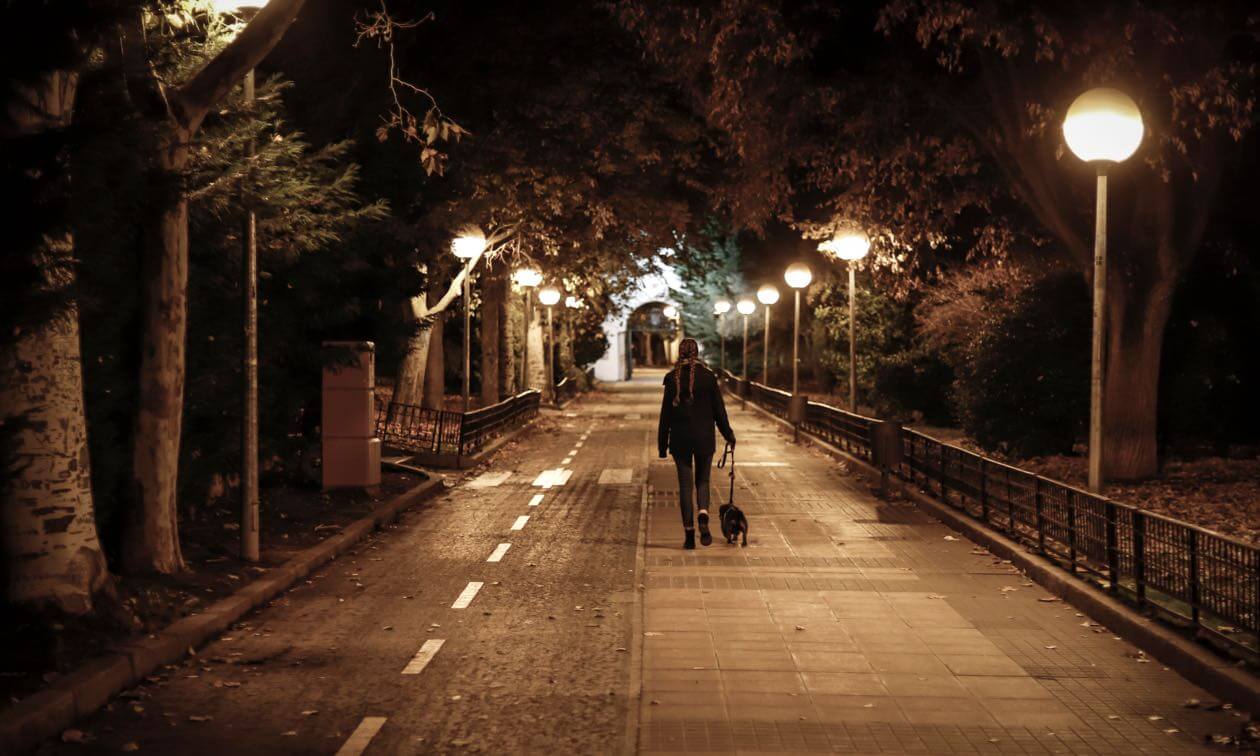Eyes are amazingly complex organs — their form and function differ from animal to animal. This diversity affects how different species see the world (including how well they see at night). Have you ever wondered if dogs can see in the dark?
How Well Can Dogs See in The Dark?
Just like humans, dogs can’t see in heavy darkness. However, they can see better in dim light than humans (as little as 1/6th of the light we would need).

What Allows a Dog to See in The Dark?
Wolves, which are ancestors of the dog, are most active at dawn and at twilight — both low-light times of the day. As dogs evolved, they maintained some of the wolf’s low-light vision capabilities that helped make them successful predators.
Rods and Cones
There are two types of light-sensitive cells in a dog’s retina: rods and cones. The type and number of cones determine what colors a dog can see. The detection of motion and vision in dim lighting is provided by the rods. Rods are responsible for signaling the presence of a lack of light, making things appear various shades of grey or black, depending on how much light is reflected.
Dogs have fewer cones (and one less cone type) than humans do but have far more rods. While they may not see as many colors as we do, they make up for it in night vision. Additionally, seeing shades of blue and yellow is beneficial when hunting camouflaged prey in low-light conditions. Having so many rods means that dogs see well in low light, are better at detecting motion, and have better shape enhancement.
Pupils and Retinas
A dog’s pupil can open larger than that of a human. This allows a maximum amount of light to be captured, providing greater overall vision.
The retina in a dog’s eyes can respond very quickly to movement or a change in their field of vision. This is called the flicker fusion frequency and increases a dog’s ability to track movement in low light.
Tapetum Lucidum
Have you ever noticed your dog’s eyes “glowing” at night when a car goes by or when you take a photo with flash? That’s the tapetum lucidum, a reflective layer behind the retina. It reflects more light into the eye’s photoreceptors, giving a dog better night vision. The tapetum also causes light to be scattered, making a dog’s vision blurry. This scatter degrades a dog’s vision from 20/20 to about 20/50 (though it can range from 20/50 to 20/80). What does that mean? If a human can see something clearly from 50 feet away, a dog can only be 20 feet away for the same level of visibility.
Whether dogs can see in the dark may depend on your definition of “dark.” Overall, they have better vision in dim light than we do, but that vision may not be as clear.
ZPC-02225R1
- Can Dogs See in the Dark? American Kennel Club. https://www.akc.org/expert-advice/lifestyle/can-dogs-see-in-the-dark/. Accessed October 3, 2022.



